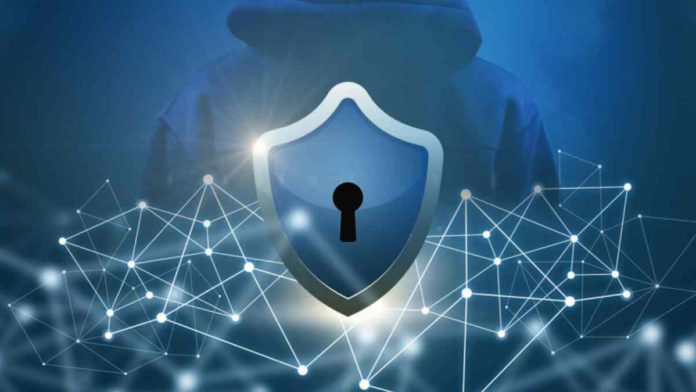Nowadays, we all need technology to work since companies are becoming more dependent on the Internet for their operations. Things like the rise of remote work, IoT devices, and cloud computing increase the need for robust network security measures. But unfortunately, despite the proliferation of security tools, many companies still fall victim to common network security threats.
These threats end up disturbing the business operations of companies, compromising sensitive data, and damaging their reputation. Today, we’ll examine five network security threats that companies can’t afford to ignore. Our goal is to help you understand the risks and implement effective security measures. By doing so, you’ll be able to safeguard your network and protect your company against potential threats.
Phishing Attacks
Let’s start with phishing attacks, which are one of the most common threats out there. These attacks typically involve a hacker trying to replicate a trustworthy source, such as a bank or even a fellow employee. These hackers try to trick the victim into divulging sensitive data making them think that the requester is a valid entity. The attackers usually go for information such as credit card numbers, passwords, and other sensitive data.
Phishing attacks come in all shapes and sizes; emails, social engineering, and SMS phishing (smishing). Although this feels like a very basic way of getting access to sensitive data, phishing attacks are usually very convincing. Attackers use tactics such as urgency, authority, and fear to make the victim feel compelled to provide the information as soon as possible.
The consequences of a phishing attack are often severe, ranging from financial loss to reputational damage. The best way to avoid phishing attacks is to train employees on how to spot suspicious emails or links and avoid downloading attachments from unknown sources. It also does not hurt to implement anti-phishing software or multi-factor authentication.
Insider Threats
While companies always go for external threats first, it is essential to prevent risks posed by insider threats. To explain, an insider threat is when a security incident originates from within the organization itself, such as employees, contractors, or business partners.
Insider threats are various accidental data leaks to malicious, intentional attacks. For example, remote users might accidentally expose sensitive data through unsecured Wi-Fi connections or share protected files with unknown individuals. Additionally, a malicious insider may intentionally steal, leak, or sell insider data, disrupt business operations, or cause financial damage to the company.
Insider threats are significant as they result in financial losses, data breaches, or even legal repercussions. In order to minimize insider threats, it is important to implement access restrictions to sensitive information, always monitor network traffic, and provide ongoing cybersecurity training to employees. But more importantly, there should be a culture of security accountability throughout the company.
Malware Infections
Malware is a broad term, and it is one of the worst network security threats. It refers to any software that is designed to damage computer systems, networks, or other devices. They can take many forms, such as viruses, worms, trojans, and ransomware. Malware infections happen when the user downloads or installs a malicious file or clicks on a malicious link.
Once the user clicks on the link or downloads the file, the malware starts infecting the whole system. The infection causes a range of problems, such as losing access to the device, system crashes, or data theft. Worst, malware can also cause the attacker to access sensitive information directly or take control of the system completely for unauthorized purposes.
The best way to prevent malware infections is to use up-to-date antivirus and anti-malware software. But beyond the tools, the best practice is to avoid downloading files or clicking on links from unfriendly sources and keep all applications updated. It is also critical to conduct regular security audits on the network to detect vulnerabilities in the system that malware can go through.
DDoS Attacks
A Distributed Denial of Service (DDoS) attack is a cyber-attack that aims to disrupt the functioning of a website or a server by overflowing the network with traffic. DDoS attacks usually involve a network of compromised devices controlled by a cyber-criminal. During a DDoS attack, the network becomes unavailable to normal users since the hacker overwhelms the network with unexpected traffic.
DDoS attacks can cause a great deal of damage to business operations, especially for companies that rely on the availability of their website for sales, marketing, and customer support.
Unfortunately, DDoS attacks are very challenging to prevent since they are done through multiple devices located around the world. On that note, companies can still minimize the impact of a potential DDoS attack by using Content Delivery Network (CDN) to distribute the overwhelming traffic. It is also suggested to use DDoS mitigation services to block attacks in real time.
Ransomware Attacks
We already talked about malware, but ransomware is a significant threat on its own since it has a greater risk of resulting in considerable financial loss. Ransomware attacks happen when a hacker gets access to a device, locks out the user, and demands a ransom to give the access back. These attacks are initiated through phishing scams and software vulnerabilities.
Once a device is infected with ransomware, all the files get encrypted by the hacker and become inaccessible to the user until the hacker gets paid a ransom. To avoid the consequences of a ransomware attack, companies should prioritize the implementation of robust recovery and backup plans. This will help them recover the files even if they lose access completely and save them from the hefty ransom the attacker demands.
If a ransomware attack occurs and you don’t have a backup, it is advised not to pay the ransom and request assistance from law enforcement or online cybersecurity services. However, the best thing to do is always be proactive and implement robust measures to reduce the risk of falling victim to ransomware attacks, as it is one of the prominent reasons for disrupted business operations.


